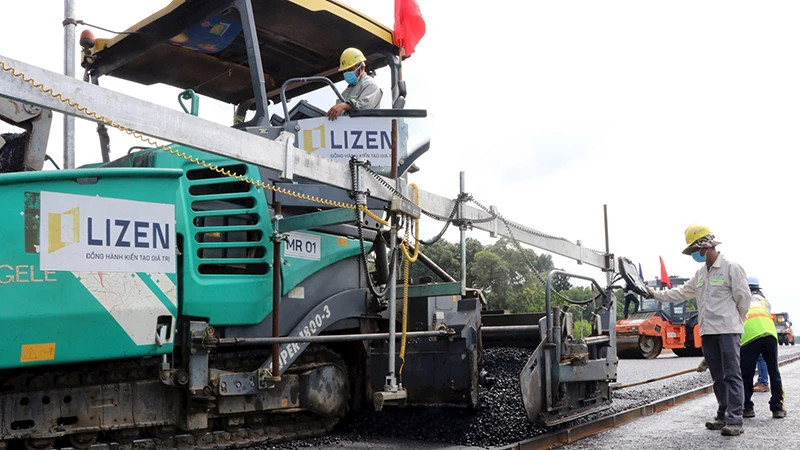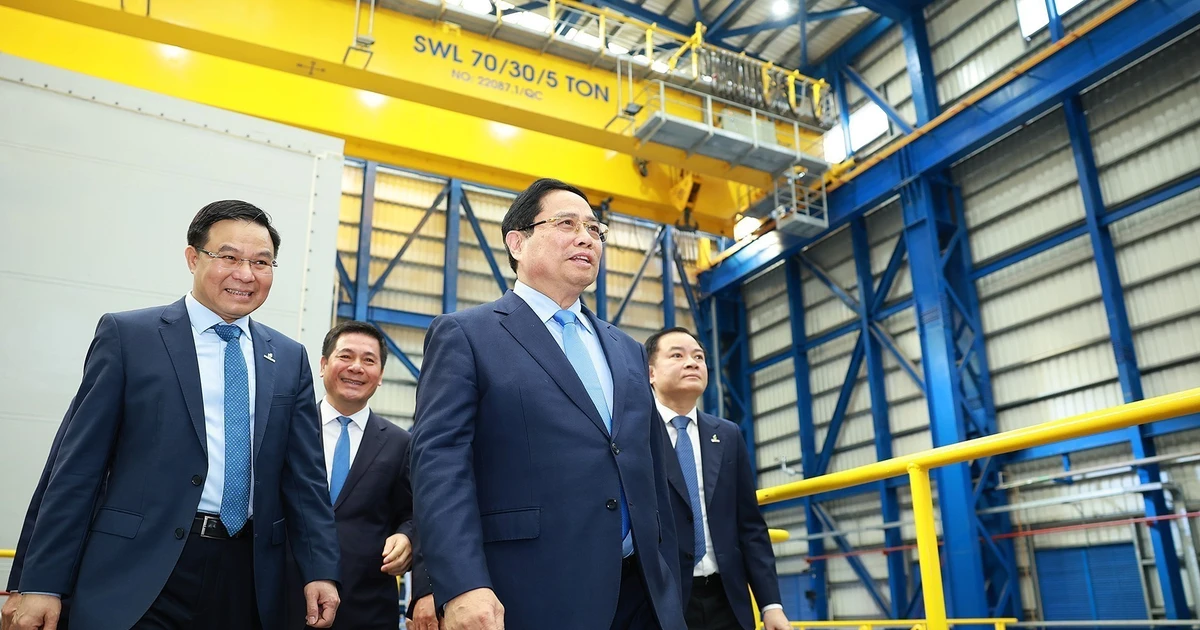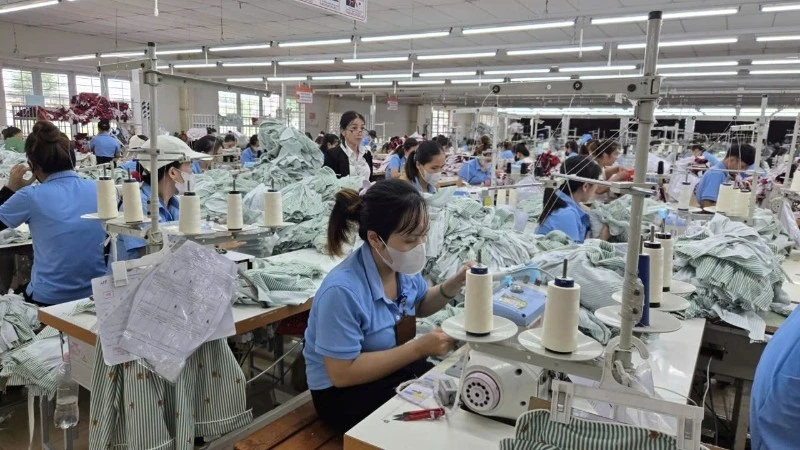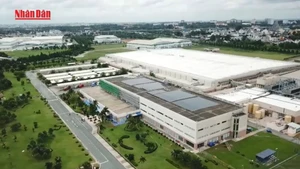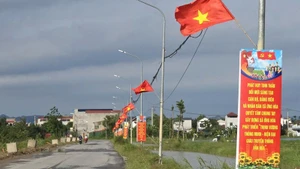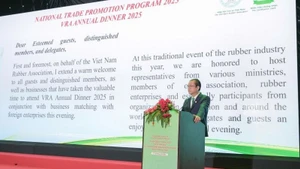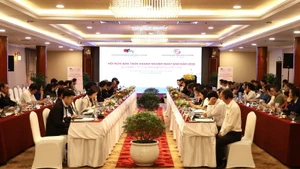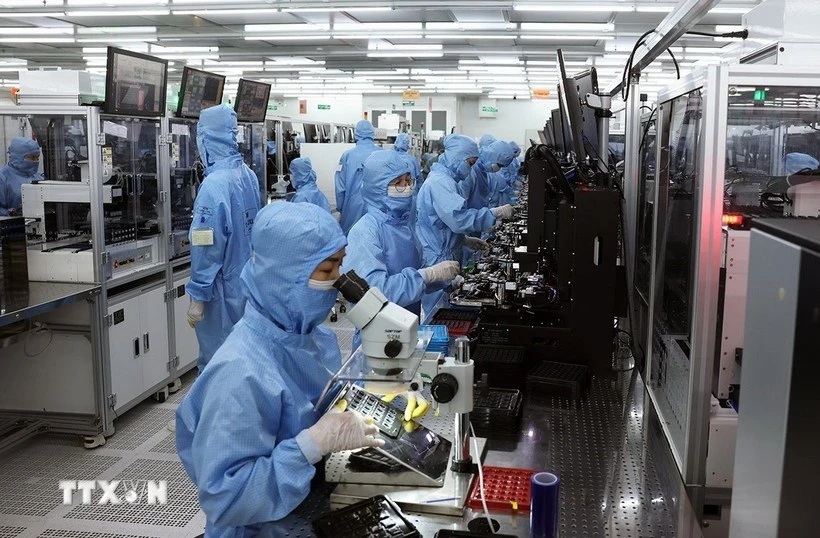At the 13th Party Central Committee Conference held in January, the Party Central Committee discussed and provided input on additional proposals for socio-economic development in 2025, aiming for a growth target of at least 8% and double-digit growth from 2026 to 2030. In line with this, the government has swiftly and decisively implemented measures before, during, and after the Lunar New Year, striving to fulfill assigned tasks as early as possible in the year.
Urgent need to improve institutions
Despite encouraging results in the first month of 2025, the Ministry of Planning and Investment has updated emerging global factors and pointed out that Vietnam’s economy is facing a challenging year.
Specifically, macroeconomic stability still carries risks, legal and institutional frameworks, despite ongoing attention and direction, remain a ‘bottleneck of bottlenecks’, the development of human resources, particularly high-quality labour, has yet to meet demands and a segment of the population continues to struggle economically.
Notably, growth drivers have yet to show a clear breakthrough as required. This is evident in the slow recovery of domestic purchasing power in January 2025 and Tet spending, which, although improving, remains sluggish. The total retail sales of goods and consumer services in January grew at a slower rate compared to pre-COVID-19 years.
Exports are expected to face greater difficulties due to the slow recovery of global demand. Additionally, the US and other major markets for Vietnamese goods are introducing new tariffs and trade protection measures, with unpredictable policy changes.
Meanwhile, the economy’s ability to absorb capital remains weak. The pressure of maturing bonds for real estate businesses in 2025 is significant. Many projects are stalled or delayed, and unresolved legal issues hinder progress.
In response to the high-growth demands of 2025, Deputy Minister of Planning and Investment Tran Quoc Phuong emphasised that among the solutions the government is urged to implement, institutional reform is a critical development resource and is considered the ‘breakthrough of breakthroughs’.
Therefore, accelerating the improvement of legal frameworks remains a pressing necessity in 2025. In the short term, it is essential to urgently review and propose amendments to key laws, ensuring timely revisions to the Law on Promulgation of Legal Documents, the Law on Management and Use of State Capital in Business and Investment, the Law on Science, Technology and Innovation, and the Law on Atomic Energy.
The effective implementation of the International Financial Centre project in Ho Chi Minh City and the Regional Financial Centre in Da Nang should also be expedited, along with plans for establishing free trade zones and border economic zones in key economic regions.
Additionally, expanding the scope and applicability of certain pilot policies, which have proven effective in some localities with National Assembly approval, should be considered. The Ministry of Planning and Investment is also working on special development policies for key economic zones such as Van Don, Van Phong, and border economic zones to unlock new growth resources.
Boosting growth drivers
On the demand side, investment is identified as a crucial growth driver with an immediate impact on economic expansion, particularly public investment.
Reiterating Prime Minister Pham Minh Chinh’s directive at the January 2025 government meeting—aiming to reduce recurrent expenditures below 60% of the state budget to allocate more resources for development investment, Deputy Minister Tran Quoc Phuong stressed the need for efficient public investment utilisation. This includes ensuring that projects are implemented promptly, adhere to schedules, and deliver tangible benefits.
Additionally, the disbursement of public investment funds should be accelerated by fast-tracking key projects, such as the Lao Cai-Hanoi-Hai Phong railway, the Hanoi-Lang Son railway, and the Hai Phong-Quang Ninh-Mong Cai route. Meanwhile, preparations for other critical projects should be expedited to ensure readiness, thereby increasing public investment scale and enhancing the country's strategic infrastructure.
According to the Ministry of Finance, Vietnam’s total public investment capital in 2025, as approved by the National Assembly and allocated by the Prime Minister, exceeds 825 trillion VND. This includes over 350 trillion VND from the central budget and more than 475 trillion VND from local budgets.
Dr Nguyen Duc Kien, former head of the Prime Minister’s Economic Advisory Group, stated that based on the approved investment budget for 2025, achieving the growth target is feasible. Compared to 2024, public investment has increased by over 120 trillion VND. Given that public investment remains the primary growth driver, its increase is expected to boost GDP.
From 2025 onward, many major infrastructure projects are expected to be completed and operational, promoting synchronised infrastructure development and socio-economic progress. The construction of the 500kV transmission line, for example, demonstrated that with strong government determination, public investment disbursement rates can improve and contribute significantly to growth.
On the export front, 2025 is expected to bring significant challenges, especially with rising trade protectionism and unpredictable US tax policies.
Therefore, the Ministry of Planning and Investment has recommended that the government closely monitor market developments and implement timely measures to minimise negative impacts from global trade fluctuations. Vietnam should also maximise the benefits of its 17 free trade agreements, explore new and potential markets, and provide businesses with better support in anti-dumping cases.
Economic experts emphasise that achieving high growth targets requires breakthrough and comprehensive solutions to unlock new growth spaces and drivers. Specifically, potential, motivation, and resources must be clearly identified to effectively prepare and harness development opportunities.
In the first month of 2025, the government issued Resolution No. 03/NQ-CP to implement Resolution No. 57-NQ/TW from 2024, focusing on breakthrough developments in science, technology, innovation, and digital transformation. This forms a foundation for Vietnam’s advancement in these areas, creating new growth momentum.
To achieve high growth targets, comprehensive solutions across all sectors and industries have been outlined in the government’s Resolution No. 01/NQ-CP.
However, with a minimum 8% growth target for 2025, serving as a stepping stone for double-digit growth in subsequent years, the intensity of implementation must be significantly increased. This requires all ministries, sectors, and localities to demonstrate strong commitment, effort, and decisive action to fulfill assigned tasks and contribute to overall economic growth.
